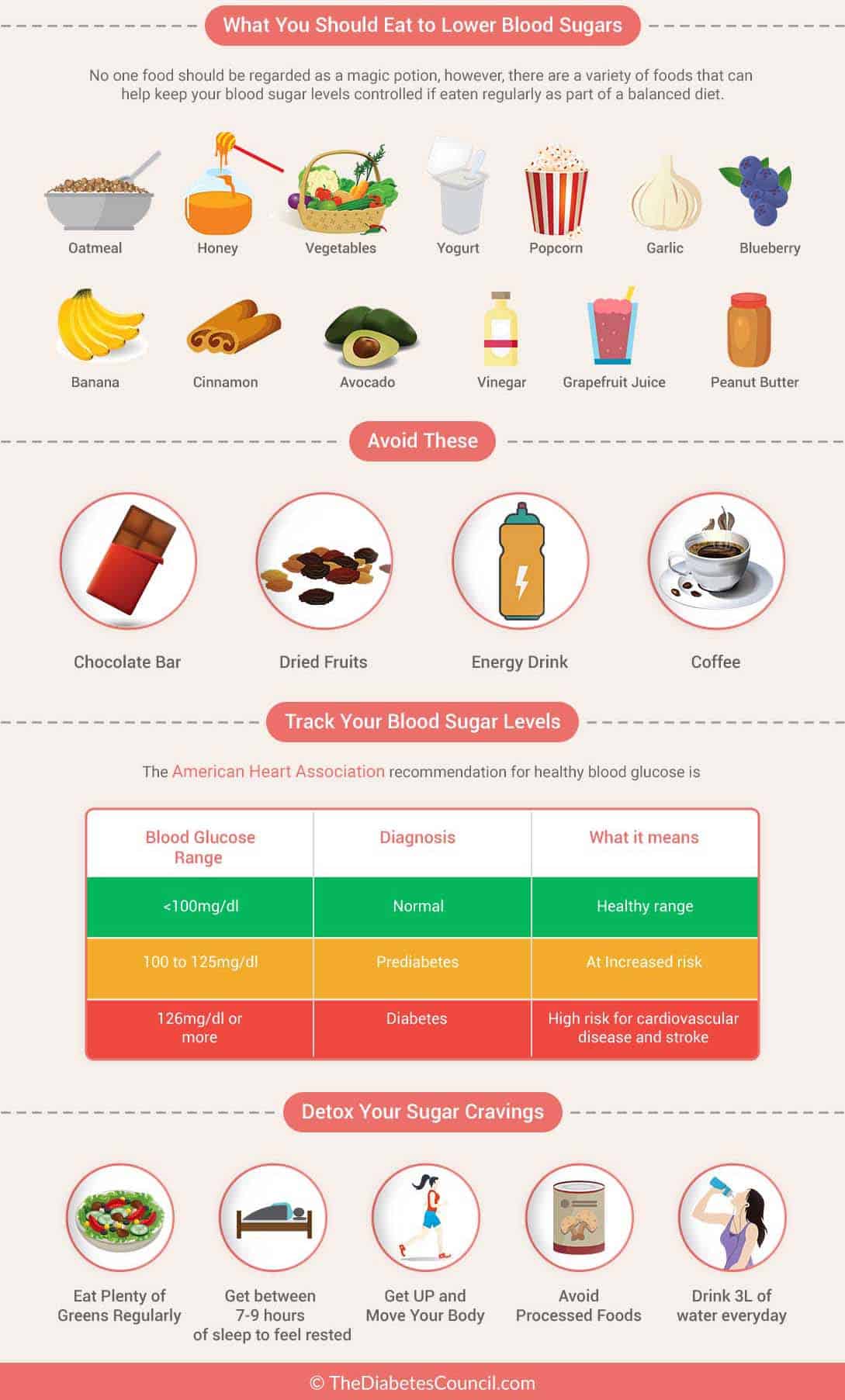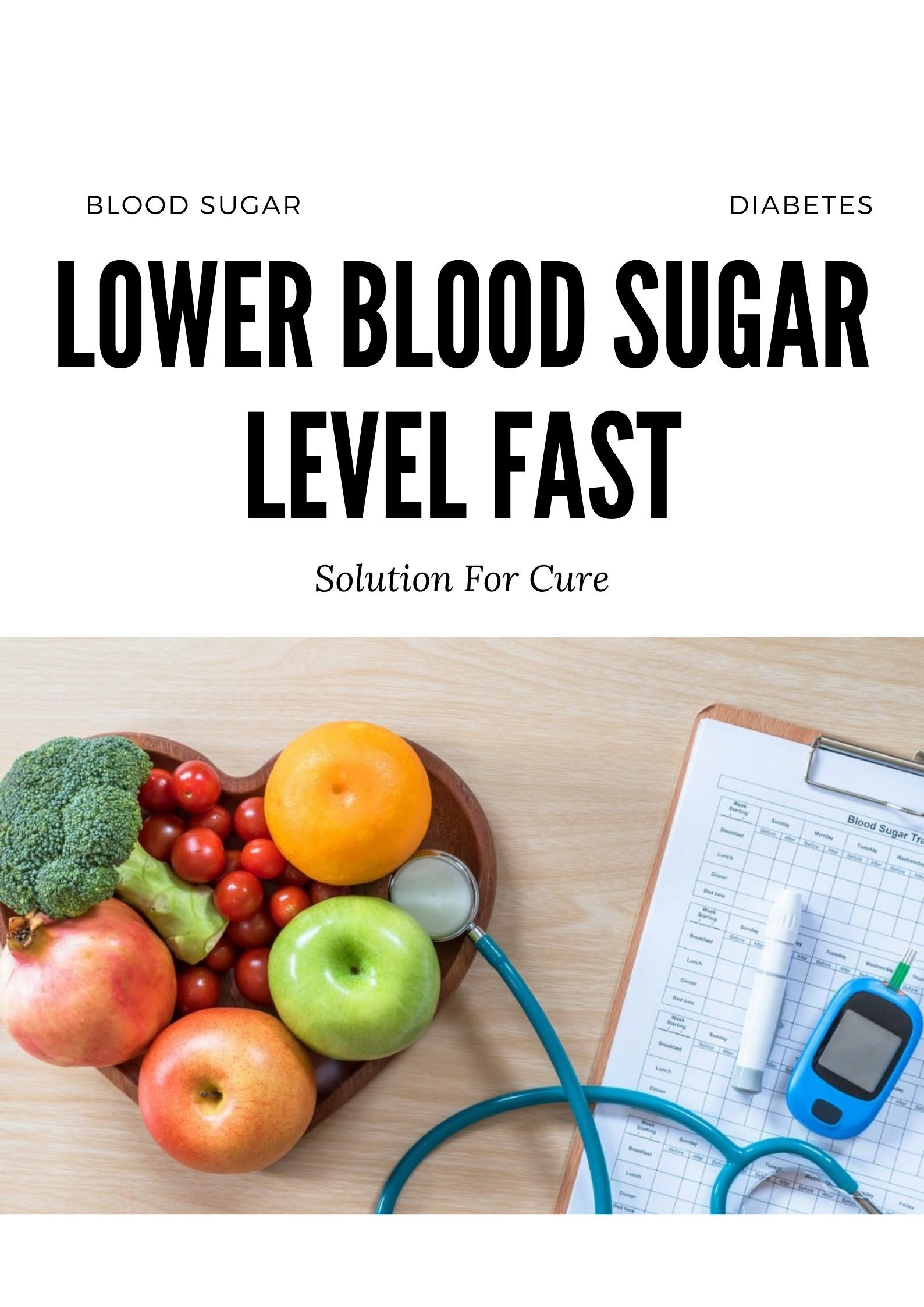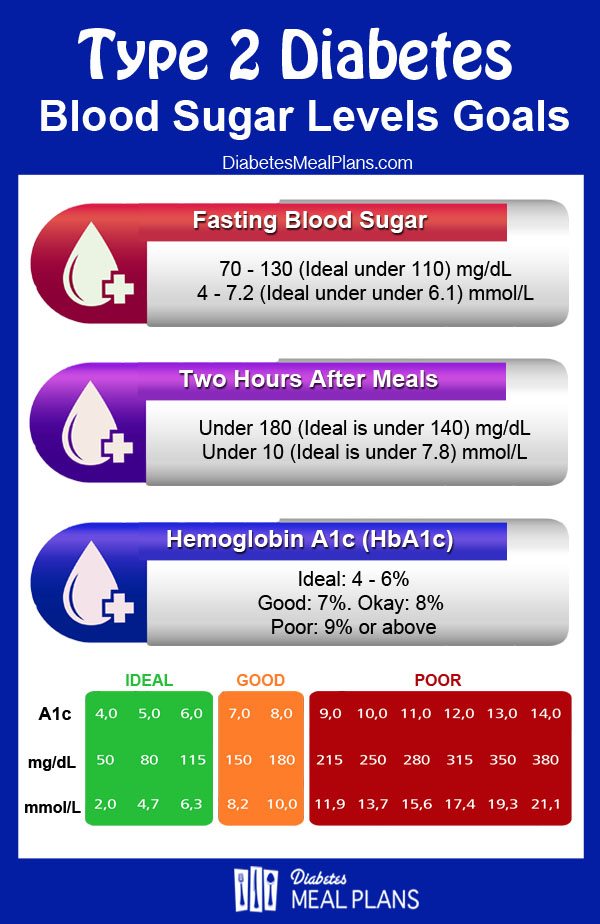Monitor Blood Sugar Levels Closely
High blood sugar levels often do not cause symptoms until they run well over 200 mg/dL. As such, it is essential for a person with diabetes to monitor their blood sugar several times a day. Doing so will mean that blood sugar levels never get that high.
A person with diabetes can use a home glucose monitor to check blood sugar levels. These are available for purchase online.
Recommendations for how frequently to check glucose levels during the day will vary from person to person. A doctor can make the best recommendations regarding blood sugar monitoring to a person with diabetes.
General Tips On How To Keep You Blood Sugar Levels In Control
- Foods to eat
You should eat foods that are high in protein, fiber, and lower in carbohydrates. You should aim at having around 45 to 60 carbs for each meal. Consistency throughout the day is key to keeping blood sugar levels in control. Foods low in fat and high in nutrients should be picked to maximize your nutrition.
Vegetables and fruits are great as well as eggs, fish, beans, and oatmeal. There is also research that shows cinnamon and apple cider vinegar can help lower your sugar.
- Foods to avoid
Avoiding foods like soda, juice, pasta, candy, and other desserts can help keep your sugar from climbing too high. These foods are high in sugars and fat but low in other nutrients.
Avoiding excess alcohol is also better for you. Read the following article that I wrote about drinking alcohol when you have diabetes to learn more about this topic:
- Signs and symptoms
Signs of high blood sugar include: increased thirst and hunger, blurred vision, irritability, dry mouth, tired, and urinating a lot.
- Look for patterns
Patterns can be great because they help you figure out what is causing undesirable blood sugar values. A good way to track of it is to keep a journal of all of the food you eat, activities you do and your blood sugar levels for 1 week. During this week, check your sugar before and after you eat, as well as in between meals. Also document any insulin that you give yourself.
- Test sugar levels regularly
How To Reduce Blood Sugar Level Immediately: Insulin
The severity of the hyperglycemia determines how to act. In cases of insulin-dependent diabetes, most people will probably use rapid-acting insulin. The name is a giveaway: this is how to reduce blood sugar level immediately.
Hopefully, using insulin will allow you to get back to normal blood sugar levels before it gets too severe. This will also be the best way to be in control you can lower your blood sugar with more accurate numbers.
This is where Hedia comes into play. Getting those numbers isnt always so easy to figure out by yourself, especially not when dealing with the hassle of high blood sugar. Hedia can deal with that instead.
When using Hedias insulin calculator, all Hedia needs is: your blood sugar reading this can even be added wirelessly and automatically with certain NFC or Blueetooth glucose meters what youve eaten recently this can be added swiftly with Hedias food database whether youve exercised recently or are about to exercise and if youve taken insulin in the last 4 hours. Have a go at the App Store or !
After taking insulin, keep testing blood sugar levels to see how your blood sugar decreases. Then, just continue with your day!
Read Also: Normal Bgl Range For Type 2 Diabetes
How Long Will It Take To Lower My Blood Sugar
If you have high blood sugarin a non-emergency situationthere are several things you can do to lower your blood sugar right away. Follow these steps in order:
Sometimes people with diabetes can go into diabetic ketoacidosis or hyperglycemic hyperosmolar syndrome, a medical emergency requiring immediate medical care. The symptoms are subtle but look out for:
- Shortness of breath
- Excessive urination
- Abdominal pain
If you experience these symptoms, call your healthcare provider immediately and follow their guidelines. If you cannot reach a physician emergently, call 911.
Only You Can Prevent Blood Sugar Spikes

Its annoying but true: The best way to lower your blood sugar is to avoid a spike in the first place.
Eating whole foods that are low in sugar and exercising regularly will help keep your blood sugar in check. This can be beneficial for people with type 2 diabetes, but medications may also be necessary to keep blood sugar in a healthy range.
To avoid food-based spikes, try to steer clear of added sugars in your diet. The FDA recommends consuming less than 200 calories a day from added sugars.
That sounds pretty simple, but when you realize that 16 ounces of orange juice has 240 calories , its easy to see how sugar consumption gets out of hand.
Its best to avoid all sugary drinks and check the labels. There are hidden sugars in everything from bread to turkey slices, so double-check your favorite foods to make sure you arent getting any unnecessary sweetness.
Don’t Miss: How To Prevent Yourself From Getting Diabetes
How To Support Your Immune System When You Have Diabetes
This post is sponsored by Herbaly Tea. Some of the links in this post are affiliate links. That means I earn from qualifying purchases and no extra cost to you. Thanks for supporting this website! always, all opinions are my own. Thanks for supporting brands I use and love.
If you have diabetes, you may have noticed that your health care provider keeps a closer eye on your health. Theres a good reason for that. Diabetes affects your immune system, and your your immune system regulates your health and well-being. Its like a military defense system that protects your body from foreign invaders.
Bump Up Your Exercise Intensity
Exercise is a great way to boost your body’s ability to manage blood sugar, but making sure it’s a heart-pumping workout will help even more. Performing brief spurts of high-intensity exercise improved blood glucose levels in diabetics and healthy people for one to three days, per a 2013 review of research. Muscles soak up glucose during exercise to burn for energy, and the higher-intensity movements may aid this process even more.
Read Also: How Can I Get Checked For Diabetes
Lose Weight And Exercise
The National Diabetes Prevention Program, designed by the Centers for Disease Control and Prevention, is meant to help people lower their blood sugar over time to avoid Type 2 diabetes.
Participants in the program are encouraged to lose 7% of their body weight and exercise for 150 minutes a week. A clinical trial found that people who followed the program reduced their risk for Type 2 diabetes by 58% over three years.
Keep An Eye On Portion Sizes
Eating a large meal puts a sugar load on your already struggling body. Overeating causes further damage to diabetics. An easy way to lower blood sugar levels naturally is to eat smaller portions. Dont worry we are not going to ask you to starve yourself! In fact, portion control comes naturally when you choose the right grains, proteins and fats. Strive to eat in moderation. To achieve satiety, eat slowly and chew your food, so your brain has a chance to let you know when youre full. If you wolf down your food mindlessly, you eat a lot more than you need which stresses out the body.
Recommended Reading: How Do I Get My Diabetic Supplies Through Medicare
Recommended Blood Sugar Targets
Blood glucose numbers are measured in milligrams per deciliter .
The American Diabetes Association and the American Association of Clinical Endocrinologists have different recommendations for blood glucose targets for most people with type 2 diabetes:
| Timing | ||
| 2 hours after eating a meal | < 180 mg/dL for nonpregnant adults | < 140 mg/dL |
Talk to your doctor to learn more about your blood glucose targets. Your doctor can help you determine which guidelines to target. Or they can work with you to set your own glucose targets.
Foods That Wont Spike Your Blood Sugar Levels
When making food choices while managing blood sugar levels, it is important to select ones that wont cause your blood sugar to increase quickly and significantly. Look for whether foods have complex or simple carbohydrates and opt for complex carbohydrates when possible.
Below are 10 foods that wont spike your blood sugar levels and some ideas for incorporating them into your meals.
Also Check: Can Blood Sugar Cause Headaches
When To Lower Blood Sugar
Hyperglycemia
When blood sugar is too high, it is termed hyperglycemia. The World Health Organization recognises hyperglycemia as blood sugar thats above 126 mg/dL or 7.0 mmol/L in a period before eating , or above 200 mg/dL or 11.1 mmol/L two hours after eating.
When blood sugar is at this point, you should take steps to reduce those numbers. It goes without saying that testing blood sugar regularly is ideal, in order to know when youre hyperglycemic.
You may also realise that youre hyperglycemic if youre experiencing some of the following symptoms:
- Fatigue
- Difficulty concentrating
- Blurred vision
Stay in control with Hedia Diabetes Assistant get it for free from theApp Storeor!
Diabetic Ketoacidosis
According to the American Diabetes Association, when blood sugar levels start teetering towards 250 mg/dL or 13.9 mmol/L is when diabetic ketoacidosis can occur.
Ketoacidosis happens because of the bodys need for fuel. With high blood sugar, the body isnt getting any fuel in the form of glucose. Instead, the body tries to burn fat for fuel, but this process leads to ketones essentially acids building up in the bloodstream.
Symptoms of ketoacidosis can include symptoms of hyperglycemia, along with:
- Vomiting or feeling nauseous
- Dry mouth
- Pain in the abdomen
Meanwhile, diabetes.co.uk recommends checking for ketones if your blood sugar levels have been consistently above 13 mmol/L or 230 mg/dL.
How To Lower Blood Sugar Naturally

Blood sugar, also known as glucose, is the main sugar in your blood and your bodys main source of energy. Blood sugars vary all day. A normal fasting blood sugar is less than 100 mg/dl. Blood sugars anytime of day regardless of when or what the last meal was should always be under 200 mg/dl. Blood sugars exceeding these two levels could signal prediabetes or Type 1 diabetes or Type 2 diabetes. Diabetes is a condition where the body cannot produce enough insulin or use insulin properly to correct blood sugars to safe levels.
You May Like: Vitamin C For Diabetes Type 2
How Is Dka Treated
DKA is very serious, but it can be treated if you go to the doctor or hospital right away. To feel better, a person with DKA needs to get insulin and fluids through a tube that goes into a vein in the body .
Let your parents or someone on your diabetes health care team know if you have any of these symptoms or are sick and donât know what to do to take care of your diabetes.
Always wear a medical identification bracelet or necklace that says you have diabetes. Then, if you are not feeling well, whoeverâs helping you will know to call for medical help. Medical identification can also include your doctorâs phone number or a parentâs phone number.
Can You Avoid Diabetes If It Runs In Your Family
Yes, your genes dont have to define you! There are genetic factors that can predispose some people to be heavier than others. Yet, your heredity doesnt define your health. Your health is determined by your environment. And, you can control your environment. For example, researchers have noticed stark differences between Pima Indians living in the Sierra Madre Mountains of Mexico eating a traditional diet, and those living in urban areas of Arizona eating a traditional Western diet. The Pima Indians of Arizona are among the most obese groups of people in the world and have a diabetes rate that is 8 times greater than the national average. Their lifestyle is mostly sedentary, and their diet is a typical American diet . Meanwhile, despite their genetic similarities, the Pima Indians of Mexico, weigh an average of 65 pounds less than their Arizona counterparts, and fewer than 4% have type 2 diabetes. The reason is in the stark differences of their lifestyles: the Pima Indians live an active lifestyle working their farms, and eat a diet rich in the whole foods . It is clear that lifestyle has an extremely powerful influence on health. You can adopt a healthy lifestyle, and enjoy a healthy body, irrespective of your genetic heritage.
Read Also: Dario Blood Glucose Monitor Kit Test
Take Your Insulin As Prescribed
High blood sugar occurs when your body has too little insulin, or your body cant use insulin properly. Administering insulin can bring your blood sugar levels down.
Talk to your doctor about how much rapid-acting insulin you should administer when your blood sugar is high.
You may want to check your blood sugar about 1530 minutes after taking insulin to make sure your blood sugar is going down and that its not dropping too low.
Manage Your Carb Intake
Your carb intake strongly influences your blood sugar levels .
Your body breaks carbs down into sugars, mainly glucose. Then, insulin helps your body use and store it for energy.
When you eat too many carbs or have insulin-function problems, this process fails, and blood glucose levels can rise.
Thats why the American Diabetes Association recommends that people with diabetes manage their carb intake by counting carbs and being aware of how many they need .
Some studies find that this can help you plan your meals appropriately, further improving blood sugar management (
Foods that are high in fiber include:
- vegetables
- legumes
- whole grains
The recommended daily intake of fiber is about 25 grams for women and 35 grams for men. Thats about 14 grams for every 1,000 calories .
Summary
Eating plenty of fiber can aid blood sugar management. Soluble dietary fiber appears to be more effective than insoluble fiber for this purpose.
You May Like: Type 1 Diabetes Meal Delivery
What Are The Symptoms Of High Blood Sugar
High blood sugar, also known as hyperglycemia, usually occurs when the body cannot use insulin properly or has extremely low levels of insulin. Insulin is the hormone responsible for moving glucose, or sugar, into the bloodstream where it can then be delivered to cells and used for energy. High blood sugar is usually associated with diabetes.
Symptoms of high blood sugar may include:
- Frequent urination
- Feeling thirsty all the time
- Increased hunger
- Tingling and numbness in hands and feet
- Skin changes, such as blisters and dryness
- Swollen and bleeding gums
- Confusion
- Abdominal pain
Patients can have symptoms of headache and dizziness with high blood pressure, but patients can also be completely asymptomatic, adds Dr. Raja.
Sweet Potatoes And Yams
Regular potatoes have a high GI score, but sweet potatoes and yams have low scores and are very nutritious.
Some research indicates that the flesh of the sweet potato contains more fiber than the skin, indicating that the whole vegetable could be beneficial for those with diabetes.
Reporting the findings of an animal study, the researchers also note that sweet potato consumption may lower some markers of diabetes.
Although there is still no conclusive evidence to suggest that sweet potatoes can help stabilize or lower blood sugar levels in humans, they are undoubtedly a nutritious food with a low GI score.
People can substitute sweet potatoes or yams for potatoes in a variety of dishes, from fries to casseroles.
Read Also: Cinnamon For Diabetes Type 2
Problems Caused By High Blood Sugar
It’s not usually a serious problem if your blood sugar is sometimes slightly high for a short time.
But high blood sugar can cause serious problems if it stays high for a long time or gets to a very high level.
It can lead to:
- life-threatening conditions such as diabetic ketoacidosis
If you have high blood sugar, your doctor or care team may ask you to test your blood or pee to check for ketones. A high level of ketones is a sign of diabetic ketoacidosis.
Which Foods Increase Blood Sugar Levels

Carbohydrates ultimately break down into glucose. Many people believe that carbs are bad for people with diabetes. This is not true. Carbs are fuel for the body, so they have to be eaten. You just need to be smart about which ones you eat and how much you eat of them. Picking foods that are high in carbs but have no other nutrition is not smart. Examples of these foods are:
- Full fat yogurt or milk
Recommended Reading: What Are The Signs Of Kidney Failure In Diabetics
Add More Resistant Starch To Your Plate
Harald Walker/Stocksy
Resistant starch found in some potatoes and beans bypasses the small intestine and ferments in the large intestine, which means it doesnt raise glucose levels and promotes the growth of good bacteria in the body, according to Johns Hopkins Medicine. Its a fiber-filled starch and helps with glycemic control, says Joelle Malinowski, RD, a certified diabetes care and education specialist with Ellis Medicine in Schenectady, New York. And the effect will last through your next meal, Weisenberger says. Its called the second-meal effect, she says.
Interestingly, resistant starch can change with heat, and some foods, like rice, are higher in resistant starch when cooked and cooled than when cooked and served warm, according to Johns Hopkins Medicine.
Resistant starches are also found in:
Just be sure to keep carb count in mind when incorporating foods with resistant starch into your diet.